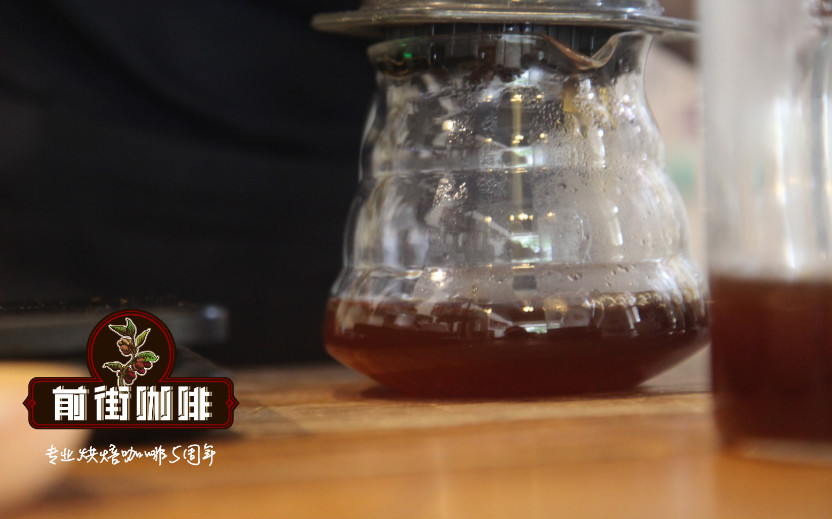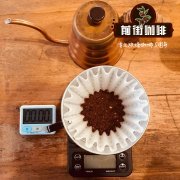Costa Rica La Lajas Coffee Manor introduces how to make coffee with Philharmonic pressure?

Professional coffee knowledge exchange more coffee bean information please follow the coffee workshop (Wechat official account cafe_style)
Costa Rica is bordered by the Caribbean Sea to the east and the Pacific Ocean to the west, as the country's name means in Spanish: a fertile coast. Located in the south of SanJos é, the capital of Tarasu, Costa Rica is one of the most valued coffee growers in the country. Tarasu (Tarrazu) is one of the major coffee producers in the world. Coffee farming is an extremely important industry in Costa Rican agriculture. The coffee beans produced at its high latitudes are famous in the world, with mild taste, high acidity, aroma and rich texture, so they are very popular. The raw beans are green and have large grains as a whole, all of which belong to Arabica species.
The historical origin of the development of the local coffee industry
The coffee industry in Costa Rica started early, with the first batch of coffee exported to Colombia and Chile in 1820. In 1854, an importer and exporter, with the assistance of William Lyon, captain of the British merchant ship the Sovereign, successfully exported 100 pounds of coffee to London, which became popular and was praised by the British aristocracy as the "golden bean" from Costa Rica. Since then, coffee has become the main cash crop in Costa Rica and changed the humble status of the former Spanish colonies. Increasingly wealthy coffee farmers send their children to Britain for further study and return to their hometown to become doctors and engineers. Coffee farmers have a high status in Colombia. In 1897, the citizens of San Jose, the capital, witnessed the completion of the National Theater donated by coffee tycoons. Coffee wealth brings stability to Costa Rica's politics, economy and democracy, which is rare in Central American countries. In addition, Colombia has a law that only allows the planting of Arabica, and Robusta is a "contraband" in its territory, which is also the only initiative seen in the world.
Located in the central valley area at the foot of the Po á s de Alajuela volcano, Ras La Haas Manor has been operated by the owner Chac ó n family for more than 80 years. The estate is 1300m above sea level and has an annual output of about 46000 jin. During the annual production season of La Lajas Manor from December to February, the owner insists on harvesting only ripe and red fruits, and most of them use dense treatment and sun drying to enhance the sweetness and mellowness of the coffee, and at the same time, it is placed in the African shelf-type sunburn field to ensure that the coffee can evenly receive the sun and avoid excessive fermentation. At the same time, the manor has also actively obtained international organic certification, which has been certified by USDA of the United States, JAS of Japan and NOP of Japan.
[Philharmonic pressure]
The playability of this instrument can be said to be quite high! After all, Philadelphia pressure is a combination of the immersion extraction method of French filter kettle, the filter paper filtration of hand-brewed coffee, and the pressure extraction principle of Italian coffee.
Through pressure extraction, it can have both the richness of espresso, the purity of hand-brewed coffee and the smoothness of a French kettle. And the coffee made by reverse pressure and positive pressure also has its own characteristics.
Parameters & techniques: grinding degree: BG 5R (Chinese standard No. 20 sieve pass rate 58%), water temperature: 90 ℃, powder-water ratio: 1:15.
Take the way of reverse pressure, pour in 15 grams of powder and directly pour water to 225 grams of cut-off water, stir three times so that the coffee powder is in full contact with hot water, stir to increase extraction in one minute, reverse pressure in one and a half minutes, and the overall extraction time is two minutes.
Flavor: aromas of spices and fermented fruits, with notes of cocoa, cream and lime acidity in the mouth, followed by citrus, plum, grapefruit and hazelnut finish.
END
Important Notice :
前街咖啡 FrontStreet Coffee has moved to new addredd:
FrontStreet Coffee Address: 315,Donghua East Road,GuangZhou
Tel:020 38364473
- Prev

Introduction to the coffee history and grading system of El Salvador Pacamara coffee beans
Professional coffee knowledge exchange more coffee bean information Please follow Coffee Workshop (Wechat official account cafe_style) the Republic of El Salvador, one of the ancient countries where coffee is produced, is a coastal country located in the north of Central America and the most populous country in Central America. El Salvador's domestic economy is dominated by agriculture, mainly producing coffee beans and cotton. As a result of years of war
- Next

How to make blue mountain coffee at home? Does Blue Mountain Coffee need Milk?
Blue Mountain Coffee refers to coffee brewed from beans from the Blue Mountains of Jamaica. According to the grade, it is divided into Jamaica Blue Mountain Coffee and Jamaican Alpine Coffee. The Blue Mountains are located in the east of the island of Jamaica (Jamaica). Because the mountain is surrounded by the Caribbean Sea, whenever the weather is clear, the sun shines directly on the blue sea, and the peaks reflect the bright blue light of the sea.
Related
- Detailed explanation of Jadeite planting Land in Panamanian Jadeite Manor introduction to the grading system of Jadeite competitive bidding, Red bid, Green bid and Rose Summer
- Story of Coffee planting in Brenka region of Costa Rica Stonehenge Manor anaerobic heavy honey treatment of flavor mouth
- What's on the barrel of Blue Mountain Coffee beans?
- Can American coffee also pull flowers? How to use hot American style to pull out a good-looking pattern?
- Can you make a cold extract with coffee beans? What is the right proportion for cold-extracted coffee formula?
- Indonesian PWN Gold Mandrine Coffee Origin Features Flavor How to Chong? Mandolin coffee is American.
- A brief introduction to the flavor characteristics of Brazilian yellow bourbon coffee beans
- What is the effect of different water quality on the flavor of cold-extracted coffee? What kind of water is best for brewing coffee?
- Why do you think of Rose Summer whenever you mention Panamanian coffee?
- Introduction to the characteristics of authentic blue mountain coffee bean producing areas? What is the CIB Coffee Authority in Jamaica?

